A winning flavor combination
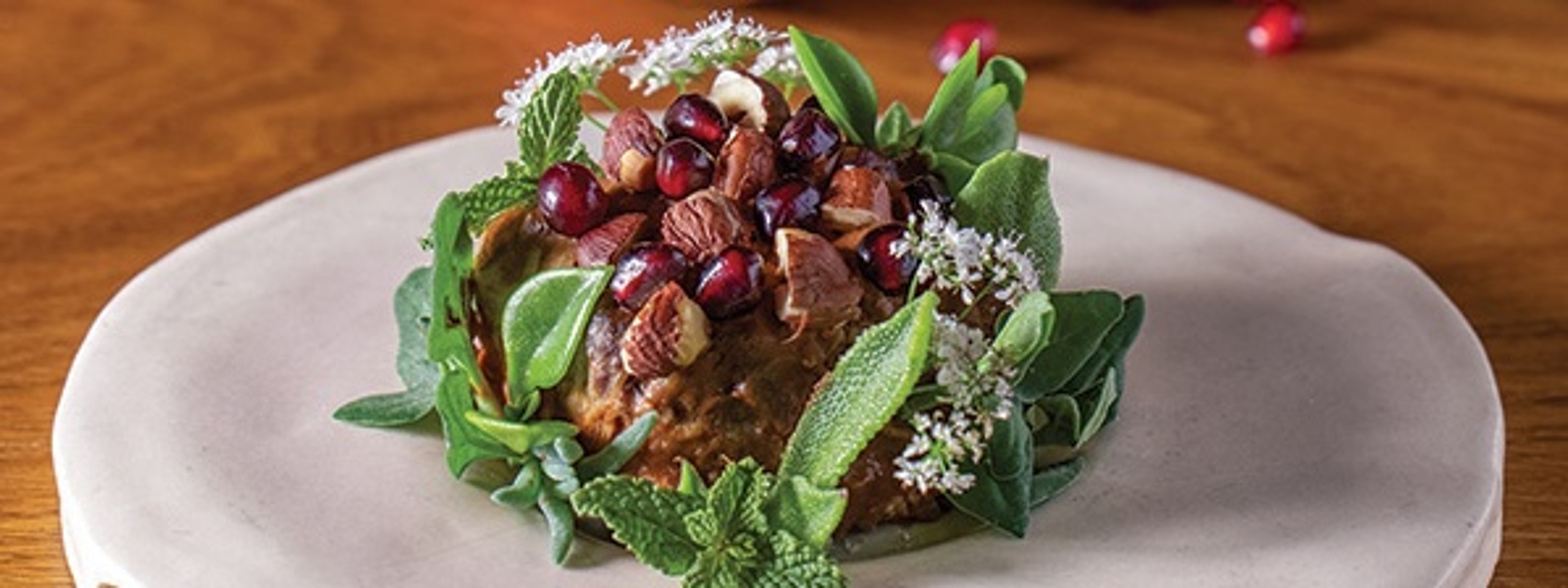
Fall 2024 California Bountiful magazine
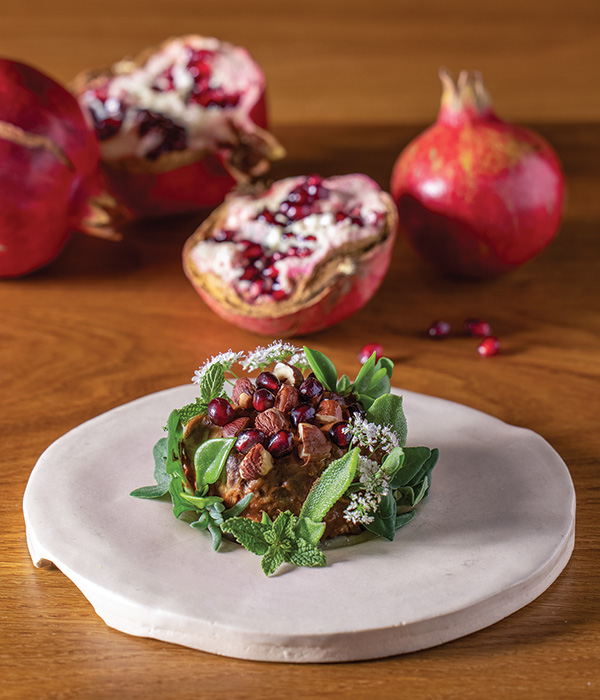
Family’s sweet-tart pomegranates prized by Bay Area chefs
Story by Christine Souza
Restaurant photos by Lori Eanes
Farm photos by Fred Greaves
For the past five years, Scott Morse of Morse Ranch in Sacramento County has introduced Bay Area chefs to his family’s prized pomegranates by sharing samples of the farm-ripened fruit that he says offers a winning flavor combination of sweet and tart.
“The first sensation when one bites into ripe, dark-red pomegranate arils is a pleasant, light sweetness and then there is a second sensation of a bold sourness,” says Morse, a retired customs and trade expert who lives in San Francisco. “The two together—whether fresh or in tarts, jam or savory sauces—are a winner.”
After dining at a San Francisco restaurant where Seth Stowaway had worked as a chef several years ago, Morse returned days later with a box bulging with aromatic red orbs straight from his family’s farm in Elk Grove.
“Sometimes, you’re thinking this person is just trying to sell me something, but then he pulled out the pomegranates, the ones that I really love,” says Stowaway, now chef/owner of Osito, a Michelin-starred restaurant in San Francisco that features seasonal cuisine cooked over fire.
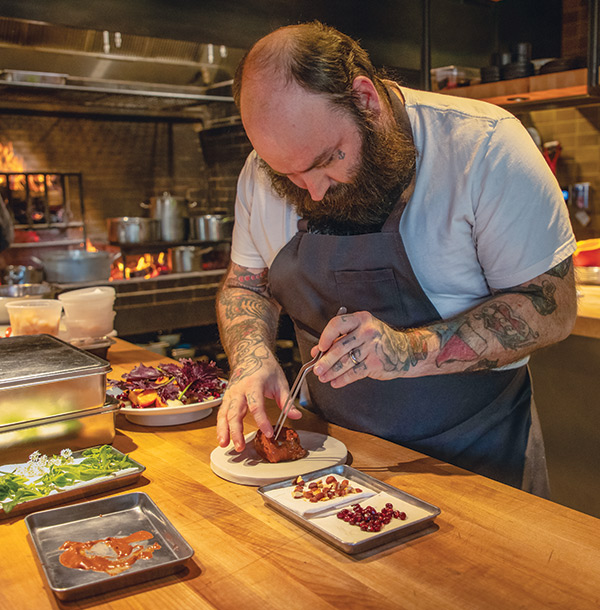
A Morse Ranch customer for more than five years now, Stowaway says the flavorful pomegranate arils—the thin skin and pulp that surrounds a white seed—“are just beautiful.” He adds, “When something is really delicious, l get goosebumps. I’ve never experienced a pomegranate like that anywhere else.”
In late November, when the farm’s pomegranates are at the peak of ripeness, Stowaway designs a menu that highlights the pomegranates and other fall flavors.
“We incorporate the deep, intense flavors of fermented pumpkin, maple and roasted pomegranate juice,” the chef says. “We use a lot of color to kind of ignite your senses and then we try to present something that looks familiar but when you eat it is completely different, so you get this old and new experience.”
Stowaway likes to use pomegranate juice as the base of a mole sauce used to flavor a glazed short rib. “It becomes super effervescent and there’s lots of bright notes,” he says.
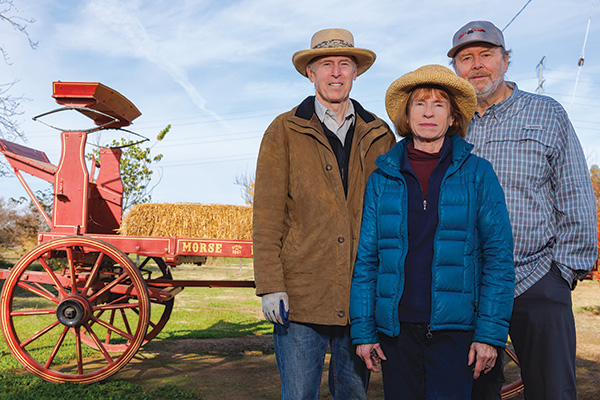
Keeping the tradition
The original pomegranate tree was planted at his family’s ranch in the 1950s, Morse says, by his aunt Barbara Evelyn Morse, who died in 2009 at the age of 90. She planted the tree so she could make pomegranate jelly.
“That pomegranate tree wasn’t very pretty to look at,” Morse recalls. “It was just a scrub that was mostly ignored and a nuisance because we kids would be asked to pick up pomegranates as a chore. It was, ‘Somebody’s got to go out and pick up the pomegranates from the ground when they fall.’”
The Morse family legacy in California began in the 1850s, after brothers George and Lucian Morse arrived in Sacramento from Wisconsin by wagon train. Morse says his early ancestors “knew how to manage a ‘jerk-line’ mule team” and worked during that time transporting mining equipment. George Morse purchased the property in Elk Grove in 1866 and farmed wheat and other crops.
Scott Morse, his brother Matt Morse and cousins who now share ownership of the ranch gather at the rural property for holidays and other occasions, a tradition that hasn’t changed much since they were children.
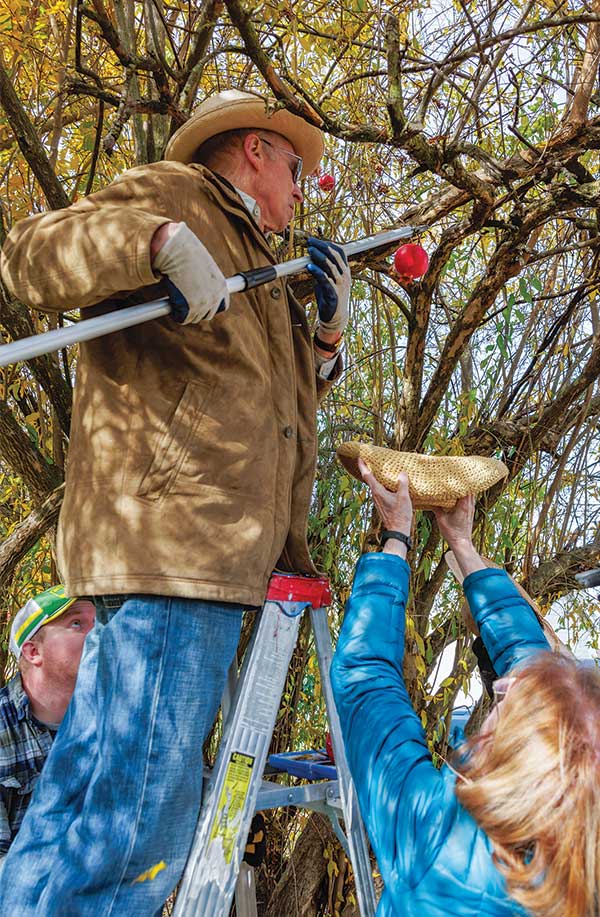
“There’s always a Christmas tree in the parlor and great food from different family recipes,” Morse says. “Some of the items are from old, handwritten recipe cards from before 1900.”
The “aha moment” to grow and sell the family’s beloved pomegranates happened years ago during the Thanksgiving holiday. Morse says a cousin cracked open a pomegranate, started eating it and encouraged the others to try it. “We couldn’t put it down,” he recalls. “It was so wonderfully delicious. That got us hooked.”
Cuttings were collected from the original pomegranate tree to produce a few hundred trees at the farm. Family members say the early pomegranate tree was a variety that originated in the Middle East and was suitable for hot, dry conditions.
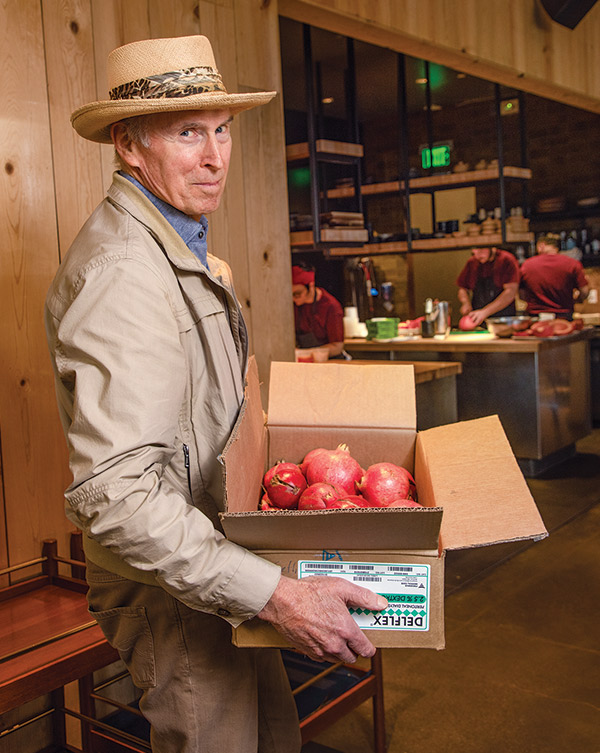
Harvest is a family affair
Pomegranate harvest at Morse Ranch begins in late November and continues through the second week of December. The ranch’s pomegranates are sold to a distributor that supplies fruit to high-end restaurants and direct to consumers. In 2027, when the family’s parcel of young pomegranate trees reaches full production, each tree is expected to produce between 400 and 600 pomegranates.
“Harvest is a family event where everyone chips in to pick the fruit by hand,” Morse says. “We put the fruit in a bucket on the back of a pickup, which travels down the rows and brings the fruit to a central point.” Fruit is then sorted and packed into boxes.
Once pomegranates reach the kitchen, Morse removes the arils from the outer shell by slicing the fruit into fourths and placing the pieces underwater and rolling the arils out. The membrane that surrounds and protects the arils will float for easy removal, he says, and the seeds can be collected by pouring them into a colander. To juice pomegranates, Morse uses a masticator to press the arils and then pours the mixture through a strainer to remove the pulp and seeds.
Matt Morse, a teacher who lives at Morse Ranch with his son, says the farm sells pomegranates to the public at its roadside stand. He says, “If somebody comes by with little kids, I’ll say, ‘Hey, let’s go pick some pomegranates.’”
Working with family members to grow and sell pomegranates “has brought us back to our roots,” he says. “It brings a new respect for the people before us. We see the hard work that it takes.”
Pomegranates descended from Middle East origins
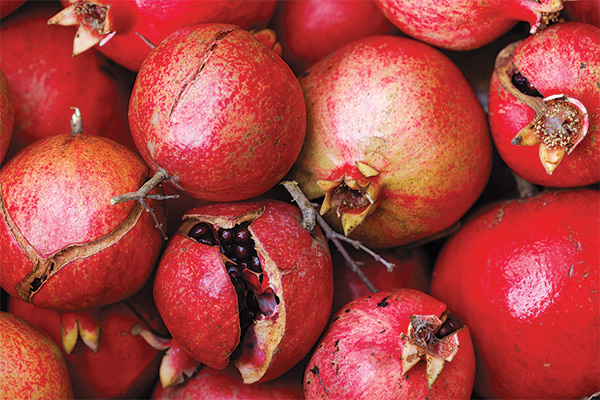
Featuring a rich palette of colors from green and yellow to pink and red, pomegranates have been cultivated since ancient times.
Scott Morse of Morse Ranch in Sacramento County says his farm’s pomegranates are grown from trees developed with cuttings from an unidentified variety—believed to be from the Middle East—planted by his aunt 75 years ago.
The farm took a cutting to experts at the University of California, Davis, and the tree at the ranch was not identified among today’s commercial pomegranate varieties.
While the Morse Ranch variety remains a mystery, Louise Ferguson, extension specialist with the UC Davis Department of Plant Sciences, says identifying a unique cultivar (a plant variety created by selective breeding) at one’s property is the way many exceptional varieties are found.
“The family likely has something unique because it comes from an isolated situation,” Ferguson says.
She speculates the family story is true that the original tree came from the Middle East, or more specifically, Afghanistan, which she says has the “biggest, most diverse pomegranate collections—yellow ones, red ones, black ones, purple ones.”
Pomegranates were in the U.S. before 1800, Ferguson says, noting that the Spanish brought the fruit around 1769 from Pakistan, Afghanistan and Iran.
“Pomegranates were exported through Asia, Africa and Europe to places that had dry conditions so they could grow,” Ferguson says.
Today, pomegranates are grown commercially and by farms throughout California where the crop thrives in the hot, dry climate.

